Yellow Brick Road
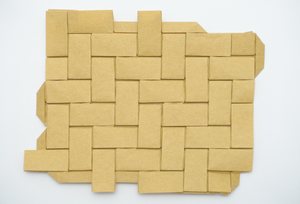
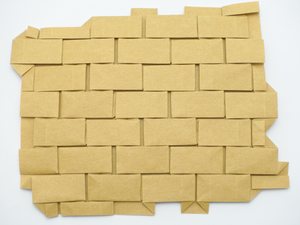
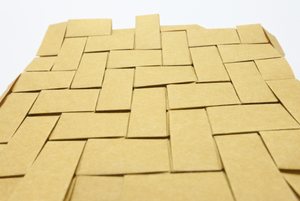
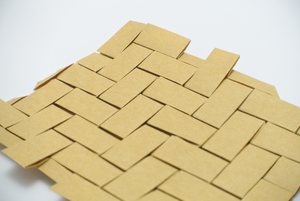
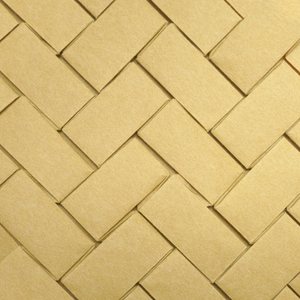
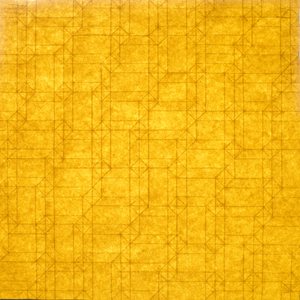
In line with the distinction made in my post on naming origami models, this design is called Brick Road while the particular work seen here is called Yellow Brick Road, for obvious reasons. The herringbone pattern as seen here is actually used for paving roads and sidewalks, and I have seen multiple examples in real life. It was already known in Roman times, under the name opus spicatum (spiked work).
The structure of the model is similar to others in the Pythagorean Tiling family, but compared to Shifted Bricks, one twist is modified in order to switch every other brick’s direction. Interestingly, the back side has parallel rows of bricks and the visible top layer is identical to Shifted Bricks with 2:1 proportions (the inner layers differ, obviously). Both sides are flagstone tessellations, which fits the pavement theme well.
Folded from a single sheet of yellow Satogami paper. The grid is 32×32. I optimized the precrease pattern (PreCP) to make the front completely clean while keeping the back reasonably clean: there is a single crease going through each brick on the back, but with this paper and lighting it is barely visible. In theory one could optimize it away, but that would make precreasing this already quite complex model even more tedious while the improvement in quality would be only minimal, so I let it be.
A short time after publishing this design, I found out that Frank van Kollem had earlier on designed a model which seems to be exactly the same.
Comments